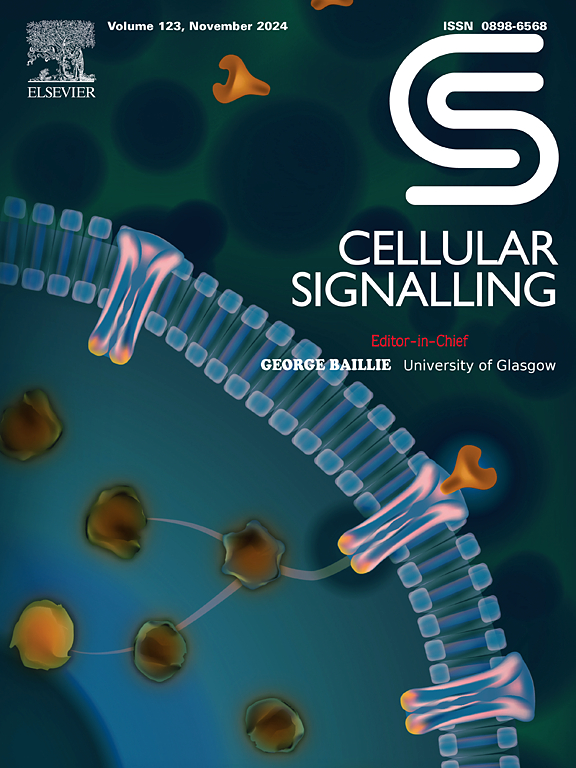Decoding the role of nucleic acid binding protein 2 in lipid dysregulation and hepatocellular carcinoma progression through LKB1-mediated mitochondrial dysfunction
IF 4.4
2区 生物学
Q2 CELL BIOLOGY
引用次数: 0
Abstract
Nucleic Acid Binding Protein 2 (NABP2), a crucial regulator in the single-stranded DNA-binding protein family, has been linked to the progression of hepatocellular carcinoma (HCC) and poor prognosis. However, the precise mechanisms by which NABP2 regulates HCC development, especially through metabolic pathways, remain unclear. In this study, we evaluated NABP2 expression in clinical HCC samples and analyzed its correlation with patient survival outcomes. Functional assays, including cell proliferation, migration, and lipid metabolism analyses, were performed in vitro and in vivo to investigate the role of NABP2 in tumorigenesis. Additionally, we examined the molecular interactions of NABP2 with the E3 ubiquitin ligase STUB1 and its impact on the LKB1/AMPK signaling pathway. Our results revealed that NABP2 was overexpressed in HCC tissues and associated with worse survival outcomes. NABP2 promoted tumor cell proliferation, migration, and disrupted lipid metabolism. Mechanistically, NABP2 regulated the proteostasis of liver kinase B1 (LKB1) by recruiting STUB1, leading to the inhibition of the LKB1/AMPK signaling axis and mitochondrial dysfunction. In conclusion, our findings suggest that NABP2 may serve as both a biomarker and a potential therapeutic target for HCC, offering novel insights into its role in metabolic reprogramming and tumor progression.

通过lkb1介导的线粒体功能障碍解码核酸结合蛋白2在脂质失调和肝细胞癌进展中的作用
核酸结合蛋白2 (NABP2)是单链dna结合蛋白家族中的关键调节因子,与肝细胞癌(HCC)的进展和不良预后有关。然而,NABP2调控HCC发展的确切机制,特别是通过代谢途径,仍不清楚。在本研究中,我们评估了NABP2在临床HCC样本中的表达,并分析了其与患者生存结果的相关性。在体外和体内进行功能分析,包括细胞增殖、迁移和脂质代谢分析,以研究NABP2在肿瘤发生中的作用。此外,我们还研究了NABP2与E3泛素连接酶STUB1的分子相互作用及其对LKB1/AMPK信号通路的影响。我们的研究结果显示,NABP2在HCC组织中过表达,并与较差的生存结果相关。NABP2促进肿瘤细胞增殖、迁移,并破坏脂质代谢。从机制上讲,NABP2通过募集STUB1调节肝激酶B1 (LKB1)的蛋白稳态,导致LKB1/AMPK信号轴的抑制和线粒体功能障碍。总之,我们的研究结果表明,NABP2可能既是HCC的生物标志物,也是潜在的治疗靶点,为其在代谢重编程和肿瘤进展中的作用提供了新的见解。
本文章由计算机程序翻译,如有差异,请以英文原文为准。
求助全文
约1分钟内获得全文
求助全文
来源期刊

Cellular signalling
生物-细胞生物学
CiteScore
8.40
自引率
0.00%
发文量
250
审稿时长
27 days
期刊介绍:
Cellular Signalling publishes original research describing fundamental and clinical findings on the mechanisms, actions and structural components of cellular signalling systems in vitro and in vivo.
Cellular Signalling aims at full length research papers defining signalling systems ranging from microorganisms to cells, tissues and higher organisms.
 求助内容:
求助内容: 应助结果提醒方式:
应助结果提醒方式:


